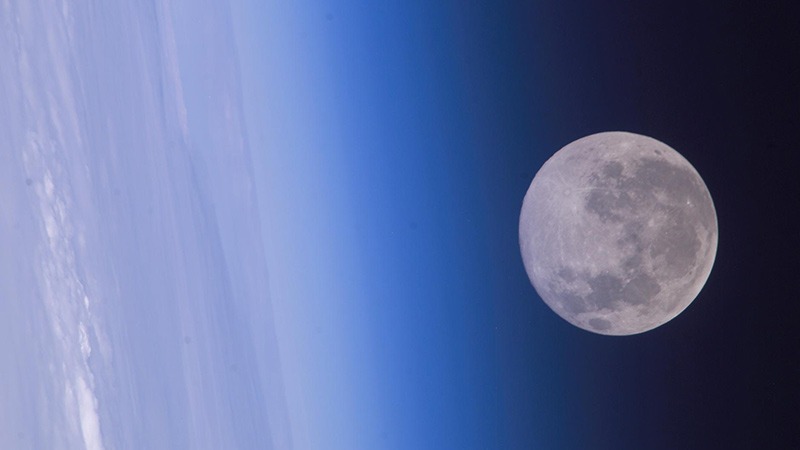Lunar thriller
By Tom Risen|September 2017
“The Martian” author Andy Weir weaves science with more complex characters living in a city on the moon.
How would people breathe, eat, sleep and pass their time in a city on the moon? Who would want to live there and who could afford to vacation there? Speaking of money, what would the city do about currency and law enforcement since no one nation owns or governs the moon? Andy Weir addresses these and other questions in “Artemis,” his second novel, due for release in November in the U.S. and Canada.
Weir’s fascination with space propelled him to begin writing “The Martian,” a hyper-realistic account of a stranded astronaut, as a free blog in 2009. He made a fortune in 2013 when the tale was published as a novel and turned into an Oscar-nominated movie of the same name. He wants to ride that success to new projects, so he has stopped working as a software engineer to be a full-time writer.
“Artemis,” the name of the fictional city in the novel, continues Weir’s emphasis on the science in science fiction that drove action in his first novel, but now he also blends futurism with storytelling through deeper character development.
“Artemis” is set in the not too distant future, when there is enough space commerce to support a city of 2,000 people on the moon, plus tourists who visit for weeks at a time to dance at clubs in lunar gravity or see the historic Apollo 11 landing site. Launching anything into orbit today costs about $10,000 per pound of payload, so the novel is set in a future when the cost of space transport has been driven lower and traffic of supplies and people flows regularly between Earth and the moon. For “about $70,000 in 2015 dollars,” Weir told me when I interviewed him several months ago, middle-class people in the novel can take a once-in-a-lifetime vacation to Artemis for a couple of weeks, stay at a hotel, shop and support a tourist industry.
“By far the best advances that can come out of space research right now, in my opinion, are reducing the price of getting people and freight into low Earth orbit,” he said.
The internet of things has also taken off in this story, so everyone has a mobile device they call a “Gizmo” that does everything ranging from opening doors to sending messages and paying for things. The moon colony of domes and tunnels has even grown to include Buzz Aldrin Park, where people play lunar gravity Frisbee on real grass near statues of Chinese moon goddess Chang’e and Artemis, the Greek goddess and the city’s namesake.
That futurist vision of an international populace living on the moon permeates the book in a way that feels natural, including with its main character Jasmine “Jazz” Bashara, who was born in Saudi Arabia but moved to the moon when she was 6. Jazz is proud to call herself “an Artemisian” and “a moon gal.”
Weir’s portrait of the future feels realistic, perhaps because of the seeds of internationalization we’ve witnessed in recent years, such as when the United Arab Emirates founded the UAE Space Agency in 2014 and China sent its Chang’e 3 probe to the moon in 2013. Weir’s future reflects the potential of space faring nations cooperating to achieve complex space endeavors.
It would not be surprising if Jazz and other women of color in the story inspire some readers to join a new generation of explorers and scientists. They are also heroines for everyone who’s dreamed of partying on the freaking moon.
Will “Artemis” become a movie? Twentieth Century Fox, which made “The Martian,” has already snapped up the movie rights for the novel. Whether those rights will be turned into a film depends on how well the book sells. That means the starring role of Jazz in this space age adventure could be a chance for an actress to inspire young women and minorities. If the film is true to the novel, it would likely need a rating of at least PG-13, given the scenes with sex, drugs and combat in lunar gravity.
Characters are more important to Weir’s second book. No spoilers here, but the moon-smart Jazz and the people living in Artemis have many more shades of gray that befit a thriller set on a world covered in gray dust.
Character writing took such priority that Weir said he wrote numerous drafts with different casts of characters and he realized Jazz was the most interesting one.
The focus on science that propelled “The Martian” enriches Weir’s second novel without getting in the way of people driving the story. Details about such things as welding and chemistry can still be a little distracting from important scenes, but “Artemis” shows Weir has grown by giving spotlight to rich, entertaining characters who also happen to live in the future. One of the characters references a ballistic orbit that is key to cycling spacecraft between Earth and the moon, for instance. Weir resists the urge to send them, and by extension his readers, on a distracting tangent rich in details of trajectory planning. Conversations and musings during the narrative only scratch the surface of the future space economy and the city’s domes built with materials mined, smelted and manufactured on the moon.
Weir has also written a research paper describing the details of how the economics and technology depicted in “Artemis” would work, but he will publish it separately later, because science is great but too much can bog down a story’s narrative. “I didn’t put it into the book because if we learned one thing from [“Star Wars: The Phantom Menace”], it’s don’t start a story with a description of supply-side economics,” he said.
Read Aerospace America’s interview with Andy Weir in the June issue.









